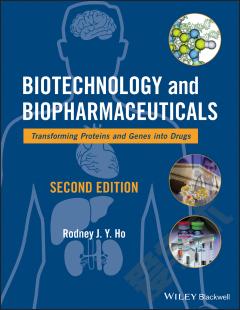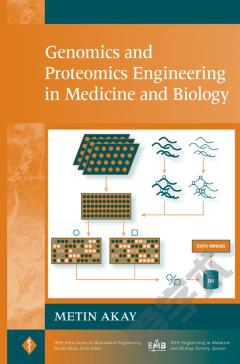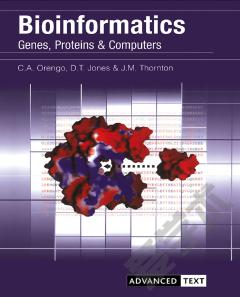Biotechnology and Biopharmaceuticals —— Transforming Proteins and Genes into Drugs
----- 生物技术和生物制药:将蛋白质与基因转变成药物 第2版
Foreword. Preface. Organization of the Book. Contributors. PART I: TRANSFORMING PROTEINS AND GENES INTO THERAPEUTICS. 1. Introduction to Biopharmaceuticals. 1.1. Biotechnology versus Pharmaceutical Biotechnology. 1.2. Historical Perspective of Pharmaceutical Biotechnology. 1.3. Not All Protein Drugs and Vaccines of the Same Name Are Identical. 2. Comparative Drug Development of Proteins and Genes versus Small Molecules. 2.1. Transforming New Molecular Entities into Drugs. 2.2. Differences between Development of Biotechnology Products of Macromolecules and Chemical Products. 2.3. Current Trends in Drug Development. 3. Biotechnology Industry Perspective on Drug Development. 3.1. Introduction. 3.2. Role of the Orphan Drug Act. 3.3. Clinical Leverage Strategy in Accelerating Drug Development. 3.4. Therapeutic Target Considerations. 4. Biopharmaceutical Technologies and Processes in Drug Development. 4.1. Application of Biotechnologies in Drug Discovery and Development. 4.2. Large-Scale Production of Recombinant Proteins. 4.3. Biologic Drug Development and Approval. 5. Pharmacology, Toxicology, Therapeutic Dosage Formulations, and Clinical Response. 5.1. Clinical Pharmacology. 5.2. Dose and Therapeutic Response. 5.3. Dosage Form and Routes of Administration. PART II: THERAPEUTICS BASED ON BIOTECHNOLOGY. 6. Hematopoietic Growth Factors and Coagulation Factors. 6.1. Overview. 6.2. Monographs. 7. Interferons and Cytokines for Anti-infective and Cancer Therapy. 7.1. Interferons in Cancer Therapy (Mamta Chawla-Sarkar, Paul Masci, and Ernest Borden). 7.2. Interferons in Viral Hepatitis (Gary L. Davis). 7.3. Interferon-b in the Treatment of Multiple Sclerosis. 7.4. Monographs. 8. Hormones. 8.1. Protein Hormones as Therapeutics:Yesterday, Today, and Tomorrow (Sandra Blethen 8.2. Monographs. 9. Enzymes. 9.1. Overview of Enzyme Therapies. 9.2. Monographs. 10. Antibodies and Derivatives. 10.1. Overview. 10.2. Monographs. 11. Vaccines (Shiu-Lok Hu and Rodney J.Y. Ho). 11.1. Why Vaccines? 11.2. How Do Vaccines Work? 11.3. Traditional Vaccine Approaches. 11.4. Subcellular and Recombinant Subunit Vaccines. 11.5. Future Directions. 11.6. Summary. 12. Other Products: Monographs. PART III: FUTURE DIRECTIONS. 13. Advanced Drug Delivery. 13.1. Rationale and Basic Principles. 13.2. Physiologic and Mechanistic Approaches. 13.3. Approaches Using Devices. 13.4. Molecular Approaches. 13.5. Summary. 14. Individualization of Drug Regimens: Integration of Pharmacokinetic and Pharmacogenetic Principles in Drug Therapy. 14.1. Overview of Factors Governing Interindividual Variations. 14.2. Historical Perspective on Pharmacogenetics. 14.3. Pharmacogenetics: Drug Metabolism and Transport. 14.4. Pharmacogenetics: Therapeutic Response. 14.5. Individualized Gene-Based Medicine: A Mixed Blessing. 14.6. Current and Potential Application of Pharmacogenetics. 14.7. Summary. 15. Gene and Cell Therapy. 15.1. Overview of Gene and Cell Therapeutics. 15.2. Delivery and Expression of Genes Encoded for Functional Proteins (Sean M. Sullivan). 16. Integration of Discovery and Development: The Role of Genomics and Proteomics. 16.1. Overview. 16.2. Integration of Discovery and Development of Therapeutic Candidates. 16.3. Genomics: The First Link between Sequences and Drug Targets. 16.4. Proteomics: From Sequences to Functions. 16.5. Integrating Proteomic and Genomic Tools to Accelerate Drug Development. 16.6. Summary. Appendix I: Dosage Form, Pharmacokinetics, and Disposition Data. Appendix II: Molecular Characteristic and Therapeutic Use. Appendix III: Nomenclature of Biotechnology Products. Appendix IV: Synonyms of Trade, Common, and Scientific Names. Appendix V: Other Information Tables. Index. Monographs Index.
{{comment.content}}








 京公网安备 11010802027623号
京公网安备 11010802027623号